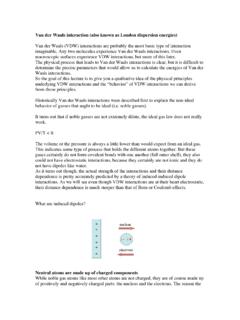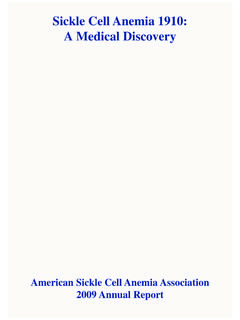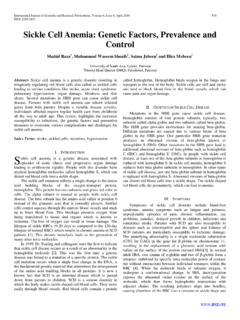Transcription of Chapter 4 Pedigree Analysis in Human Genetics
1 Chapter 4 Human Heredity by Michael Cummings 2006 Brooks/Cole-Thomson LearningChapter 4 Pedigree Analysis in Human Genetics Chapter 4 Human Heredity by Michael Cummings 2006 Brooks/Cole-Thomson LearningMendelian Inheritance in HumansPigmentation Gene and AlbinismFig. Chapter 4 Human Heredity by Michael Cummings 2006 Brooks/Cole-Thomson LearningTwoGenesFig. Chapter 4 Human Heredity by Michael Cummings 2006 Brooks/Cole-Thomson LearningThe Inheritance of Human TraitsDifficulties Long generation time Data must be obtained fromoffspring produced Experimental matings are notpossible Limited sample size Chapter 4 Human Heredity by Michael Cummings 2006 Brooks/Cole-Thomson LearningPedigree Analysis Pedigree is an orderly presentationof family information First step in studying the inheritanceof traits Important in predicting genetic risk May be incomplete due to difficultiescollecting information Chapter 4 Human Heredity by Michael Cummings 2006 Brooks/Cole-Thomson LearningPedigree Analysis Construct Pedigree using availableinformation Rule out all patterns of inheritancethat are inconsistent with the data May not have enough information toidentify the mode of
2 Inheritance Some genetic disorders may havemore than one pattern of inheritance Chapter 4 Human Heredity by Michael Cummings 2006 Brooks/Cole-Thomson LearningCatalogs of genetic TraitsFigure Chapter 4 Human Heredity by Michael Cummings 2006 Brooks/Cole-Thomson LearningAutosomal Recessive Traits For rare traits most affected individualshave unaffected parents Offspring of two affected individualsare affected Expressed in males and females equally In rare traits unaffected parents withaffected offspring may be related to eachother Chapter 4 Human Heredity by Michael Cummings 2006 Brooks/Cole-Thomson LearningPedigreeSymbolsFig. Chapter 4 Human Heredity by Michael Cummings 2006 Brooks/Cole-Thomson LearningProband First affected familymember who seeksmedical attention for agenetic disorder Chapter 4 Human Heredity by Michael Cummings 2006 Brooks/Cole-Thomson LearningAutosomal recessiveFig.
3 Chapter 4 Human Heredity by Michael Cummings 2006 Brooks/Cole-Thomson Learning12123532 III IIIRare recessive trait12aaaaaa Chapter 4 Human Heredity by Michael Cummings 2006 Brooks/Cole-Thomson Learning12123532 III IIIRare recessive traitaaAa12 Aaaa aa Chapter 4 Human Heredity by Michael Cummings 2006 Brooks/Cole-Thomson Learning12123532 III IIIRare recessive traitaaAaAa12 Aaaa aaAA?Aa?Aa? Chapter 4 Human Heredity by Michael Cummings 2006 Brooks/Cole-Thomson Learning Chapter 4 Human Heredity by Michael Cummings 2006 Brooks/Cole-Thomson LearningCystic Fibrosis Is an Example of anAutosomal Recessive Trait Disabling and fataldisorder Affects sweatglands and glandsthat producemucus anddigestive enzymesFig. Chapter 4 Human Heredity by Michael Cummings 2006 Brooks/Cole-Thomson LearningMolecular Basis for Cystic Fibrosis Gene located onchromosome 7 Cloned in 1989 (Tsui & Collins)Fig.
4 Chapter 4 Human Heredity by Michael Cummings 2006 Brooks/Cole-Thomson Learning Cystic Fibrosis TransmembraneConductance Regulator (CFTR) CFTR regulatesflow of chlorideions across theplasmamembrane Reduces fluid inglandularsecretionsFig. Chapter 4 Human Heredity by Michael Cummings 2006 Brooks/Cole-Thomson LearningSickle Cell Anemia Is anAutosomal Recessive Trait Hemoglobin is an oxygen transportmolecule in red blood cells (RBC) Sickle cell hemoglobin is abnormal andcauses RBCs to become crescent or sickleshaped RBCs are fragile It is difficult to maintain normal oxygencarrying capacity Chapter 4 Human Heredity by Michael Cummings 2006 Brooks/Cole-Thomson LearningSickle Cell Anemia Many systems are affected Lethal as homozygous recessive Heterozygotes generally unaffected Confers resistance to malaria parasite High frequency in populations wheremalaria is foundFig.
5 Chapter 4 Human Heredity by Michael Cummings 2006 Brooks/Cole-Thomson LearningSickle-cell Syndrome Hb gene Hb gene Wild-type Hb = A allele Sickle-cell allele Hb = S allele Wild type AA SSAffected SS ASThree kindsof hemoglobinsCarrier Chapter 4 Human Heredity by Michael Cummings 2006 Brooks/Cole-Thomson LearningCarrier ( AS)Polypeptides: , A and S S SS Chapter 4 Human Heredity by Michael Cummings 2006 Brooks/Cole-Thomson LearningNormal CarrierAffected DominanceHb productionAAASSSC odominantRBC shapeNormalNormalSickleA -dominantS - recessiveMalaria resistanceNormalResistantResistantS - dominantA - recessive Chapter 4 Human Heredity by Michael Cummings 2006 Brooks/Cole-Thomson LearningAutosomal Dominant Traits Heterozygotes and homozygousdominant individuals are affected Affected offspring have at least oneaffected parent Equal number of males and females Chapter 4 Human Heredity by Michael Cummings 2006 Brooks/Cole-Thomson LearningAutosomal DominantFig.
6











